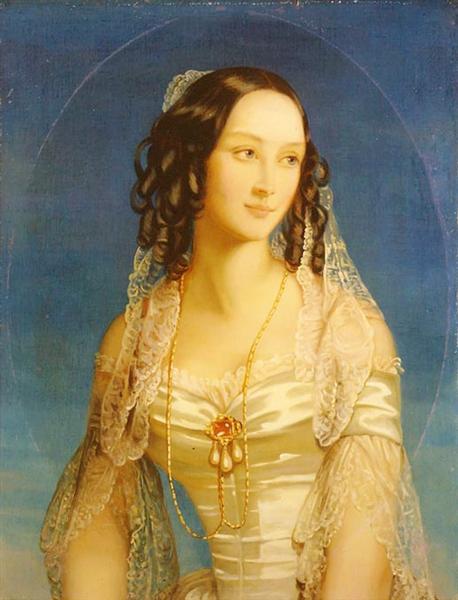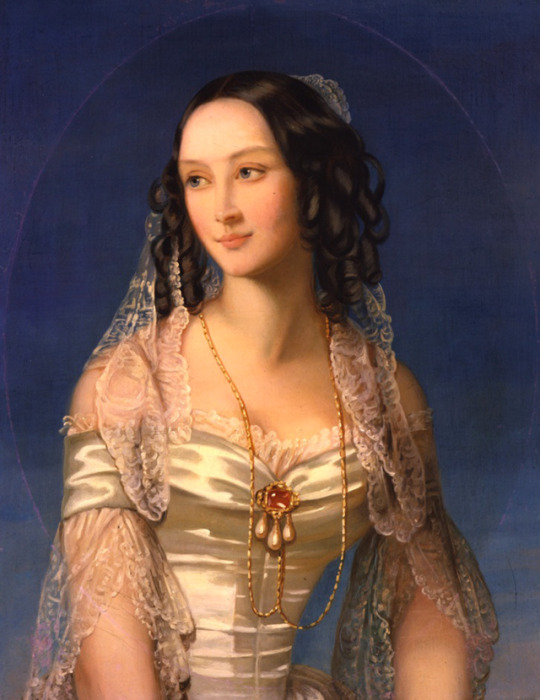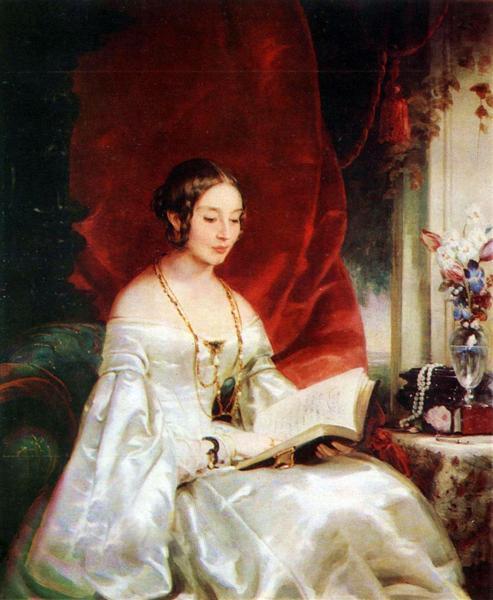#daughter of boris yusupov
Explore tagged Tumblr posts
Text

It was now painfully clear that Paul and Olga must make their home permanently in Paris; but they needed a far more imposing residence and initially looked for somewhere near Versailles. Finally, they found the perfect home at L’Hôtel Youssoupoff at 2 avenue Victor Hugo, Boulogne-sur-Seine, in the 16th arrondissement. It had been built in 1860–61 for Princess Zinaida Naryshkina, widow of Prince Boris Yusupov, when she had remarried to Comte Charles de Chaveau and settled in Paris. When the princess died in 1893, Prince Nikolay Yusupov in St. Petersburg inherited the mansion, but it had been empty for more than ten years when Paul and Olga found it.

Olga at last had a project into which she could throw all her energies and bring to life the rarefied style of Belle Époque living and entertaining to which she aspired. In many ways the couple were archetypal Proustian figures: and indeed the Countess von Hohenfelsen gets a passing mention in the great French classic À la recherche du temps perdu (In Search of Lost Time), in which Marcel Proust’s fictional character Madame de Guermantes is described as having offended Grand Duchess Vladimir by making the social faux pas of wrongly referring to Countess von Hohenfelsen as “Grande-Duchesse Paul.” Paul gets a mention too, as the “good Grand Duke,” as do the high society personalities with whom he and Olga regularly associated: Prince and Princess Murat, the Comtesse de Portales, Lady de Gray, Vera de Talleyrand-Perigord, Prince and Princess Baryatinsky, Madame de Chevigné, the Comtesse de Greffulhe, and the poet Robert de Montesquiou—who appears in Proust as the “Baron de Charlus.” Despite the pain of separation from Russia and Paul’s children, as well as their son Vladimir—who had returned to St. Petersburg to train at the elite military school the Corps des Pages—Paul and Olga enjoyed a gilded exile with their two daughters, in a home created together that was “worthy of a Pompadour or a Du Barry

"After the Romanovs" - Helen Rappaport
#romanov#paul alexandrovich#imperial russia#imperial family#royalty#exile#royalty in exile#irina paley#natalia paley#vladimir paley#olga paley#belle époque#marcel proust#paris
12 notes
·
View notes
Photo

Eudoxia Borisovna Yusupova, Duchess of Courland (16 May 1743 - 8 July 1780)
#eudoxia borisovna yusupova#duchess of courland#daughter of boris yusupov#wife of peter von biron#history#women in history#18th century#art
2 notes
·
View notes
Photo








Zinaida Ivanovna Yusupova painted by Christina Robertson
Princess Zinaida Nikolayevna Yusupova (Russian: Зинаи́да Никола́евна Юсу́пова; 2 September 1861 – 24 November 1939) was an Imperial Russian noblewoman, the only heiress of Russia's largest private fortune of her time. Famed for her beauty and the lavishness of her hospitality, she was a leading figure in pre-Revolutionary Russian society. In 1882, she married Count Felix Felixovich Sumarokov-Elston, who served briefly as General Governor of Moscow (1914–1915). Zinaida is best known as the mother of Prince Felix Yusupov, the murderer of Rasputin. She escaped revolutionary Russia and spent her remaining years living in exile.
Zinaida Nikolayevna Yusupova was the only surviving child of Prince Nicholas Borisovich Yusupov (October 12, 1827 – July 31, 1891), Marshal of the Imperial Court, and Countess Tatiana Alexandrovna de Ribeaupierre (June 29, 1828 – January 14, 1879). Prince Yusupov was a patron of the arts, and first served in the chancery of Tsar Nicholas I. Zinaida's mother, a lady-in-waiting to the Empress, was the daughter of Comte Alexandre de Ribeaupierre and his wife Catherine Mikhailovna Potemkina, a niece of Prince Potemkin.
Princess Zinaida's only brother, Prince Boris Nicholaievich Yusupov, died in early childhood. She also had a younger sister, Princess Tatiana Nicholaievna, who died young, in 1888. As the only surviving child of a distinguished, highly placed, and vastly rich couple, Zinaida enjoyed great favor at court. She was the greatest Russian heiress of her day, and the last of her line, the House of Yusupov. The Yusupovs, a family of Crimean Tatars origin, were very wealthy, having acquired their vast fortune generations earlier. Their properties included four palaces in St. Petersburg, three palaces in Moscow, 37 estates in different parts of Russia (Kursk, Voronezh and Poltava). They owned more than 100,000 acres (400 km²) of land and their industries included sugarbeet factories, brick plants, saw-mills, textile and cardboard factories, iron-ore mines, flour mills, distilleries and oil fields on the Caspian Sea.
Prince Nikolai Borisovich Yusupov was hoping that Zinaida would make an illustrious marriage, but at a reception organized to pair her with the Prince of Battenberg, Zinaida met and fell in love with Count Felix Felixovich Sumarokov-Elston (October 5, 1856, Saint Petersburg, Russia - June 10, 1928, Rome, Italy), son of Count Felix Nikolaievich Sumarokov-Elston. Felix was a lieutenant in the Horse Guards. They were married on April 4, 1882 in Saint Petersburg, Russia. Princess Zinaida and her husband had four sons, two of whom survived childhood: Prince Nicholas Felixovich Yusupov (1883–1908) and Prince Felix Felixovich Yusupov (1887–1967). After his father-in-law died, in 1891, Felix was granted special permission by Tsar Alexander III to carry the title Prince Yusupov as well as that of Count Sumarokov-Elston and to pass them both to his and Zinaida's heir. Prince Felix was appointed adjutant to the Grand Duke Sergei Alexandrovich in 1904 and commanded the Cavalry of the Imperial Guards. In 1914 he was appointed Governor General of Moscow, a position he held briefly.
The couple had their own mansion in Liteyny Avenue, where the Institute of Economic Relations, Economics and Law is currently located. She owned the palace at Nevsky Prospect 86 as well.
As a leading figure in pre-Revolutionary Russian society, Zinaida was famed for her beauty, elegance and the lavishness of her hospitality. In her book of memoirs, Ladies of the Russian Court, Meriel Buchanan (1886-1959), daughter of the British ambassador at the Russian court, described Princess Zinaida as: "Delicate in health, easily exhausted, essentially feminine, she was not one of those capable, competent woman, able to run big charitable organizations. She was always ready to give, freely and generously, to anyone who appealed to her, to do what she could to help anyone in distress, to lend her name, her house, her resources for any worthy cause, but she shrank from publicity, from all the complications of executive administration."
Princess Zinaida Yusupova served as lady-in-waiting to both the Empress Maria Feodorovna and later Empress Alexandra Feodorovna and was a close friend to Grand Duchess Elisabeth Feodorovna wife of Grand Duke Sergei Alexandrovich of Russia.[2] In private, she became a severe critic of Empress Alexandra Feodorovna, Grand Duchess Elisabeth's sister. Zinaida's eldest son, Nicholas, age 26, was killed in a duel in 1908, an event which cast a shadow over the rest of her life. In February 1914, Zinaida's younger son, Felix, married Princess Irina Alexandrovna of Russia, Tsar Nicholas II's only niece. Felix fell from grace for participating in the murder of Grigori Rasputin.
Following the Russian Revolution, she lost her vast wealth. She and her husband moved to Rome living under reduced circumstances. After his death she moved to Paris, where she died in 1939.
The Australian conductor Alexander Briger claims descent from her, though it is unlikely.
3 notes
·
View notes